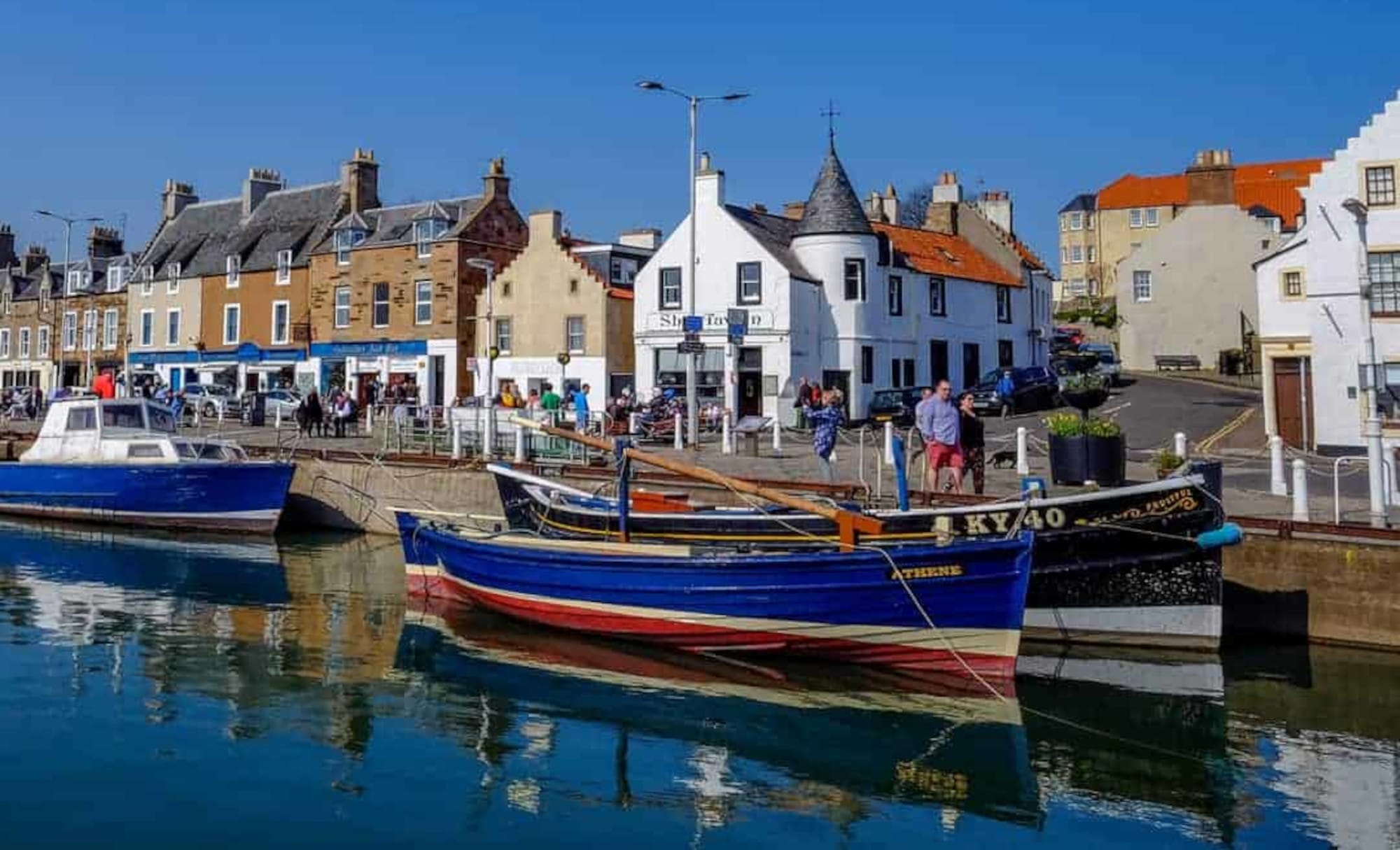Impossible List - 15 April
How far I've come over the course of the last month in regards to the impossible list of goals I've set for myself.

The East Neuk of Fife presents a postcard-perfect image to visitors: colourful fishing boats bobbing in harbours, weathered stone cottages with red pan-tile roofs, narrow winding streets, and seafood restaurants serving "catch of the day."

The East Neuk of Fife presents a postcard-perfect image to visitors: colourful fishing boats bobbing in harbours, weathered stone cottages with red pan-tile roofs, narrow winding streets, and seafood restaurants serving "catch of the day." Yet behind this idyllic façade lies a complex story of economic transformation, as these once-thriving fishing communities have reinvented themselves as tourist destinations, with mixed results.
For centuries, fishing defined the character and economy of East Neuk villages like Anstruther, Pittenweem, Crail, and St. Monans. The daily rhythms of these communities were dictated by the sea, boats leaving before dawn, returning laden with herring, cod, and haddock, women gutting and smoking fish, and the constant activity of a working harbour.
At its peak in the late 19th century, the fishing industry in the East Neuk supported thousands of jobs. Pittenweem alone had over 40 fishing boats in the 1950s. Today, that number has dwindled to a handful. The decline came gradually but relentlessly: overfishing, changing consumer habits, competition from industrial trawlers, and EU fishing quotas all contributed to the industry's contraction.
As fishing declined, tourism emerged as an economic lifeline. The very elements that made these villages functional fishing communities, their harbours, tight-knit urban layouts, and distinctive architecture, became selling points for visitors seeking an authentic coastal experience.
The transition was deliberate. Fife council invested in harbour improvements, heritage centres, and marketing campaigns. The famous Anstruther Fish Bar (winner of the UK Fish and Chip Shop of the Year) draws thousands of visitors annually. The Scottish Fisheries Museum celebrates the very industry that has largely departed. Seasonal festivals and food events create additional draws.
On paper, the strategy has worked. Tourism has become a significant economic driver in the East Neuk, with gift shops, cafés, holiday rentals, and restaurants providing employment where fishing jobs once dominated. While precise figures for the East Neuk specifically are difficult to find, tourism's economic impact is evident throughout these transformed villages.
Yet this transformation has created new problems and exacerbated existing ones:
Perhaps the most visible impact is on housing. Second homes and holiday rentals have become increasingly common in East Neuk villages, with many properties now serving as vacation accommodations rather than permanent residences. Property prices have skyrocketed beyond the reach of local incomes.
Tourism creates a feast-or-famine economic cycle. During summer months, villages buzz with activity and businesses thrive. Come winter, many establishments close entirely, creating seasonal unemployment and a ghost-town atmosphere.
Villages designed for resident populations of a few hundred must now accommodate thousands of day-trippers, particularly on summer weekends. Narrow streets become congested, parking is insufficient, and basic services like public toilets are overwhelmed.
Perhaps most poignantly, there's a sense that something intangible has been lost. Fishing wasn't just an industry; it was a cultural foundation that gave these communities their identity, traditions, and social cohesion.
This creates what might be called the authenticity paradox. Visitors are drawn to these villages because they appear authentic and unspoiled. Yet their very presence, and the economic transformation it drives, threatens the authentic character they seek.
Fishing boats become primarily decorative elements in the harbour, creating atmosphere rather than livelihoods. Former fishermen offer boat trips rather than catching fish. Fish and chip shops import much of their seafood from elsewhere, even as they promote local heritage.
Meanwhile, the businesses that serve visitors, craft boutiques, artisanal coffee shops, upscale restaurants, bear little resemblance to the practical establishments that once served the local community.
Some communities are working to find a middle path that preserves local character while embracing tourism's economic benefits.
In Pittenweem, the active fish market still functions in the early morning hours, selling primarily to restaurants and wholesalers. The annual Pittenweem Arts Festival has created a cultural identity beyond fishing or generic tourism.
Community land trusts in several villages have begun purchasing properties to ensure affordable housing remains available for local families. Planning restrictions on new holiday accommodations have been implemented in certain areas.
The East Neuk Wheelchair Friendly Tourism Initiative works to make these historic villages more accessible, recognizing that heritage preservation shouldn't preclude modern improvements.
The story of the East Neuk villages illustrates a broader pattern seen in industrial communities worldwide, from coal mining towns in Wales to former textile centres in New England. When traditional industries decline, tourism often emerges as an apparent solution, bringing both opportunities and challenges.
The most successful transitions may be those that neither cling rigidly to the past nor surrender completely to the tourist economy. Instead, they find ways to diversify, maintaining elements of traditional industries where possible while developing new sectors that provide year-round employment and authentic community life.
For the fishing villages of the East Neuk, the challenge remains finding a sustainable path that honours their maritime heritage without becoming merely theatrical versions of their former selves, places where people not only visit but can live and work with dignity and purpose.